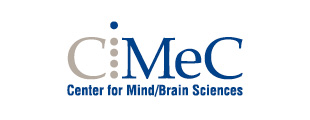Overview | Research directions | Members | Publications | Ongoing Collaborations | Web
Overview
The communication between distant brain areas and the information flow between them is one of the most urgent and most fascinating questions of modern neuroscience. We use human brain imaging techniques to study the communication between brain areas by means of neural oscillations and synchrony. Magnetoencephalography (MEG/EEG) allows us to capture the highly dynamic interactions in large-scale networks with millisecond precision. We seek to understand the general principles by which the directed communication between different brain areas may help orchestrate perception and sensorimotor control.
Research directions
- top-down mechanisms of visual attention:We use Magnetoencephalography (MEG) recordings to investigate top-down mechanisms of visual attention. The superb temporal resolution and the whole-head coverage of MEG allows us to study interactions of wide-spread neural networks by means of neural oscillations and synchrony. In particular, we became interested in mechanisms subserving non-spatial attention, e.g. when searching for a certain color. Within each subject we combine our temporally precise MEG recordings with spatially high-resoluting fMRI activity. In addition we confirm measures of functional connectivity (i.e., coherent neural oscillations in two or more areas) with the subject‘s individual anatomical connectivity by means of diffusion tractography (DTI);
- frequency tagging functionally specialized brain areas: In MEG and EEG recording we often use frequency tagged stimuli: different aspects of a visual scene are updated periodically at slightly different presentation rhythms. After Fourier-transforming the whole brain activity, we can identify areas that picked up the stimulus‘ oscillation patterns and study their role in processing certain aspects of the layout. The movie on the right slides through Frequency domain (not time) and shows activation peaks at two different stimulation frequencies evoked by overlaying dot patterns, one of which was attended;
- tagging the functional compartmentalization in high-level visual hierarchy:We developed a 2D-Fourier based frequency-tagging approach that allows tagging different aspects of a scene simultaneously and retrieving phase-locking values and information about the relative phase-lags (,latencies‘) for various functional compartmentalizations in high-level visual cortex;
- functional and anatomical connectivity: When we study patterns of functional connectivity, e.g. in terms of coherent oscillatory activity in two brain regions, we also try to to pinpoint the anatomical basis of these functional connectivities. To do so we analyze DTI scans in our participants and reconstruct fiber bundles in the white matter that connect the two sites;
- visual attention in movement preparation: In psychophysical experiments we use secondary letter discrimination tasks to test how attention is deployed in the scene, e.g. while the participants prepare for actions. Often the primary tasks involve movement sequences such as series of saccades or pointing movements. We showed that if participants were asked to prepare for rapid movement sequences attention splits into multiple foci as to cover several (up to three) subsequent goal positions in parallel. Also if two movements are simultaneously prepared, e.g. when reaching bimanually, attention splits up between the intended points of application.
Members
- Daniel Baldauf, Principal Investigator
- Ingmar DeVries, Postdoc
- Philipp Schwedhelm, Postdoc
- Marco Bedini, PhD student
- Francesco Mantegna, PhD student
- Orhan Soyuhos, Master student
Publications
For a complete list see Daniel Baldauf personal page
Ongoing Collaborations
- Joachim Gross, University of Münster, Germany
- Robert Desimone, MIT, USA
- Yasaman Bagherzadeh, MIT, USA
- Dimitrios Pantazis, MIT, USA
- Nao (Naotsugu) Tsuchiya, Monash University, Australia
- Stefan Treue, German Primate Center, Germany
- Stefano Panzeri, IIT, Italy
- Emanuele Olivetti, Bruno-Kessler-Foundation, Italy
- Paolo Avesani, Bruno-Kessler-Foundation, Italy
- Christian Keitel, University of Stirling, UK
- Francesco Mantegna, NYU, USA

